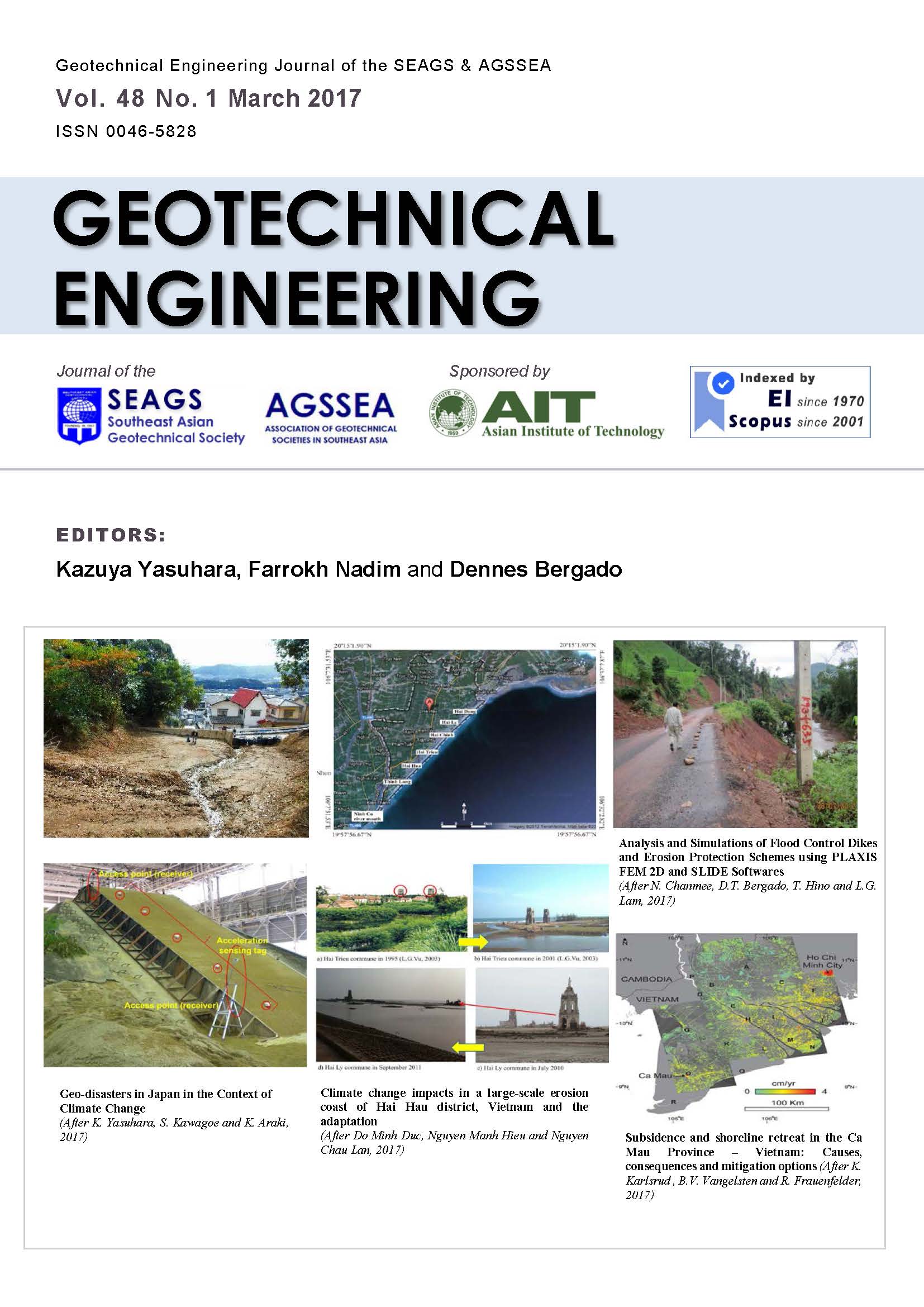Iron and Steel Slag Properties and Mechanisms for Carbon Dioxide Fixation in a Low- carbon Society
Main Article Content
Abstract
This report presents carbon dioxide (CO2) fixation properties of an iron and steel slag containing calcium, in order to contribute to a geotechnical application for the formation of a sound material-cycle society and a low-carbon society. To investigate the properties of CO2 fixation, CO2 fixation tests with constant flow were conducted. Results show that when the CO2 concentration 4500 L- CO2/L was flowed in a specimen by 0.05 L/min, for a non-aged steelmaking slag, the amount of CO2 fixed was the maximum: 0.04 g- CO2/g-slag. The amount of CO2 fixed in the steelmaking slag resulted from about 20% of soluble calcium in the chemical reaction. Therefore, it is possible that the quantity of CO2 fixation can be evaluated from the viewpoint of the mechanism of CO2 fixation using the quantity of water-soluble calcium.
Article Details

This work is licensed under a Creative Commons Attribution-NonCommercial-NoDerivatives 4.0 International License.
Copyright © 2019 Association of Geotechnical Societies in Southeast Asia (AGSSEA) - Southeast Asian Geotechnical Society (SEAGS).


